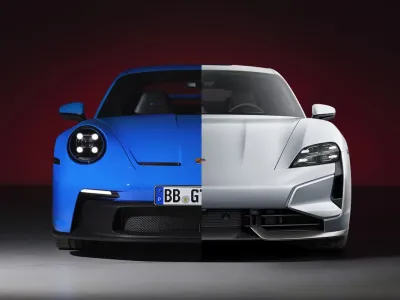An Overview of the Top-End Luxury Automotive Market
Last year, the automotive market was hit extremely hard by the pandemic. However, the luxury segment as many predicted proved to be more resilient and several companies managed to limit significantly the losses.
The first half of 2021 instead has been positive for all of the players in the segment with several reporting record sales and revenues. Especially Aston Martin and McLaren which went into 2020 already in a difficult phase have so far recovered significantly. The two British companies, registered respectively +224% and +90.4% in sales, and +242% and +110.5% in revenue. Other competitors, while reporting less eye-catching growth rates, mainly because they were all coming from much more stable situations, still reported important results:
· Bentley – Deliveries Volume 7,199 +46.4%, Revenues €1,324 mn +53.9%
· Lamborghini – Deliveries Volume 4,852 +36.8, Revenues €961 mn +25.6%
· Ferrari – Deliveries Volume 5,456 +32.2%, Revenues €2,046 mn +36.12%
· Porsche – Deliveries Volume 153,656 +31.4%, Revenues €16,530 mn +33%
Granted that countries do not incur new lockdowns and factories are not forced to shut down again, the risk for the industry right now comes from another factor. The chip shortage is affecting every technology-intensive industry and automotive is no exception. The relatively lower amount of supply required by low-volume manufacturers could shield these companies from delays, depending, of course, on the provisions.
As of now though, while the industry seems on track to full recovery, it is interesting to have a look back for an overview to have a more precise picture of where the industry is going.
SUVS POPULARITY AND OTHER MODELS
For quite a few years now, SUVs have been by far the most popular vehicle category, with sales constantly growing in every segment, and in all major automotive markets, especially in the biggest one, China.
In the luxury segment too, automakers and even low-volume manufacturers have adapted (or are adapting) to this trend. It was naturally more difficult for some with a long history with specific vehicle classes and a scarce product line, but eventually, even the likes of Aston Martin, and (soon) Ferrari, jumped on the bandwagon. Early adopters like Porsche have been doing it successfully for many years now, to the point where they consistently sell at least twice as many SUVs as all the other models combined every year.
 *Include data from Aston Martin, Bentley, Ferrari, Lamborghini, McLaren, and Rolls-RoyceOf the three companies less affected by the pandemic, Bentley, Lamborghini, and Ferrari, the first two surely managed these results thanks to the continued success of Bentayga and Urus. In the case of other companies with worse results, SUVs helped to limit the damage. At Aston Martin over 1,500 DBX accounted almost for 50% of the total sales of 2020, most of which were due to aggressive de-stocking. Rolls-Royce’s Cullinan too partially saved the automakers year, with over 2,000 units delivered and just a 12% decrease while the rest of the range recorded a -40%.
*Include data from Aston Martin, Bentley, Ferrari, Lamborghini, McLaren, and Rolls-RoyceOf the three companies less affected by the pandemic, Bentley, Lamborghini, and Ferrari, the first two surely managed these results thanks to the continued success of Bentayga and Urus. In the case of other companies with worse results, SUVs helped to limit the damage. At Aston Martin over 1,500 DBX accounted almost for 50% of the total sales of 2020, most of which were due to aggressive de-stocking. Rolls-Royce’s Cullinan too partially saved the automakers year, with over 2,000 units delivered and just a 12% decrease while the rest of the range recorded a -40%.
The graphs show how in just five years, SUVs have already reached and slightly surpassed both GTs and Sports cars in the low-volume market.
The two graphs show also that differently from SUVs, other car classes in this segment peaked in 2018 and have been decreasing since. 2021, will surely be an improvement over 2020, but these models could take longer to just reach the 2019 levels.
Going a bit more in-depth, of the two categories, the sports cars are the ones that decreased the most, which could indicate another major trend. After all, most manufacturers are adding more practical models to their line-up to cater to clients who want the thrill of fast driving but still look for a car to be driven daily. Even the more focused one. McLaren launched its GT in 2019, and Lamborghini after the Urus, has confirmed that its fourth model will also be more practicality-oriented, perhaps a 4-door GT, and most likely full-electric.
ENGINE SIZES
When it comes to engines, apart from the fact that 2035 should see the definitive stop to any ICE car sales, environmental regulations have been already significantly affecting the sector for a while.

In 2021, Ferrari and McLaren which up until now fitted their car only with V12 and V8 (McLaren uses only the V8), both released their new mid-engine hybrid pairing the electric system with a much smaller V6.
However, despite the overall drop in sales of last year, the ratio, in the last three years, remained pretty much unchanged. Where some automakers like Ferrari, McLaren, and eventually Aston Martin have already released smaller engines, others are more likely to directly shift to full-electric powertrains in the next few years.
It is the case of Rolls-Royce, according to its CEO Torsten Müller-Ötvös. Similarly, at Lamborghini, the big V12 is considered a defining characteristic of the brand itself. So while the automaker has already released its first hybrids (Siàn and new Countach), they kept the same engine in each one of the models. The next in line will most likely receive the same treatment. The rumoured fourth model instead will probably be all-electric, based on the same platform of the Taycan.
If automakers manage to abide by the restrictions with these alternative strategies, we might keep seeing big engines in sports and luxury cars for quite a few years yet.
MARKET SIZES
Another interesting fact is observed by looking at the overall market sizes within the three major regions of EMEA (Europe, Middle East, Africa), APAC (Asia Pacific), and Americas.

All three regions have been growing steadily in the past years at a similar rate, with the Asian region getting only slightly closer to the other two. In 2020 however, with the pandemic as a major contributing factor, that ended up affecting more the US, than Asia, the sales of five companies (Aston Martin, Bentley, Ferrari, Lamborghini, McLaren) in the APAC region where for the first time, higher than those in the Americas.
Not all companies have the same reliance on Asian countries though. For instance, Ferrari, while selling a lot in China, relies more heavily on Europe and the US. Bentley on the other hand sold most of its cars in Asia last year. Nonetheless, after 2020, if this trend continues, it could give European low-volume manufacturers an additional reason to focus on Eastern markets.
One final ‘indirect’ observation, is that after looking at these data, 2021 will be even more interesting. It will certainly give an indication of how all of these aspects of the market are going to develop over the next few years with both the next generation of hybrid models coming to the market and the effect of the pandemic gradually disappearing.
If you like what you read here and you would like to support me in developing this platform you can do it here:
IF YOU WOULD LIKE TO SUPPORT ME AND THIS WEBSITE’s DEVELOPMENT







